TECHNOLOGYX TEST BENCH
Below is today’s case build for the 600Q. Be sure to click the linked table below if you want to check out any of the components on Amazon!!!
| Motherboard | Asus Z97-A |
| CPU | Intel®Core™ i5-4460 CPU @ 3.20 GHz |
| Graphics | GeForce GTX 680 4GB Enthusiast Edition |
| PSU | Cooler Master V850 |
| CPU Cooler | Corsair H115i |
| RAM | 32GB Crucial Ballistix Tactical Tracer (4x8GB) |
| Fans | 2 x 140mm exhaust (Bottom & Rear) |
| SSD | Plextor M6S 256GB |
BUILD & FEATURES
Overall the build went great, components fit well, we didn’t have any major issues with making everything fit and getting the computer up and running again.
We will highlight some good and bad points though, top to bottom front to back. The concept of the inverted chassis is really cool, it brings something new to the scene and if you’re a little quirky and want to be a little different this will certainly get the job done. One of the big issues we saw with having an inverted case even pre-build was heat dissipation. A regular case is structured with how heat rises. As you get your heat rising it is usually exhausted through a high rear exhaust fan or top exhaust. In this case you have the heat that escapes your CPU cooler rising up to your VGA that rising to the top of your chassis which it’s only exit path is into the PSU. 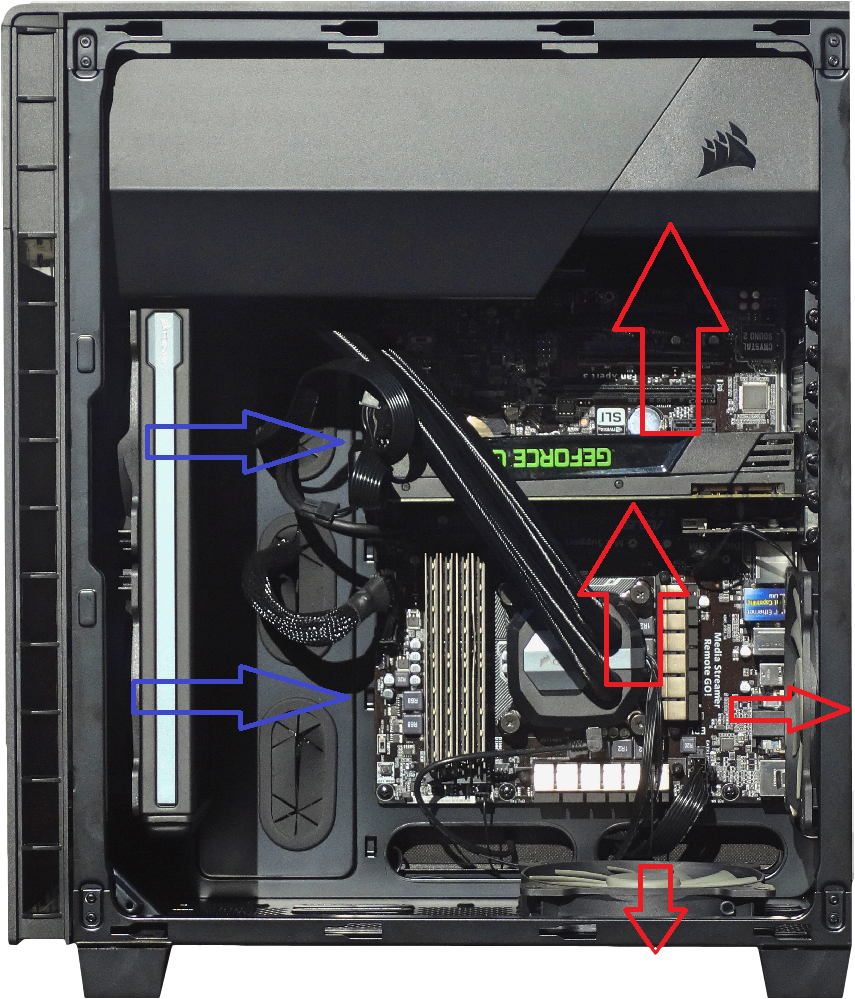 As you can see our chart shows the basic flow of air through our system. For the average gamer or everyday casual user this won’t actually affect you that much. But for those overclocking or pushing your system to it’s limits with much higher end parts the lack of cool air available for your PSU and the fact that the exhaust system is basically moot due to the law of physics saying heat rises, those two exhaust fans aren’t pulling as much warm air out as they usually would if they were at the top of the system.
As you can see our chart shows the basic flow of air through our system. For the average gamer or everyday casual user this won’t actually affect you that much. But for those overclocking or pushing your system to it’s limits with much higher end parts the lack of cool air available for your PSU and the fact that the exhaust system is basically moot due to the law of physics saying heat rises, those two exhaust fans aren’t pulling as much warm air out as they usually would if they were at the top of the system.
When we went to install our H115i AiO cooling system, we ran into an issue with space. We had to remove the housing and bracket for the front 3.5″ drive as the mounting support wouldn’t allow us the configuration we desired. 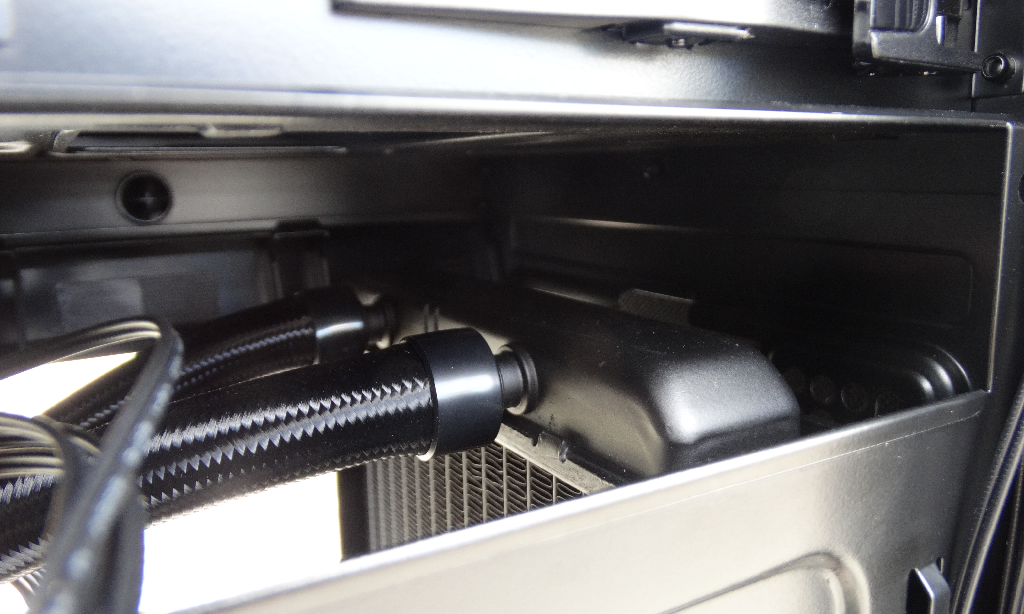 This was not a big deal as we weren’t using the drive but for some of you with large hard drives this may irk you. Keep in mind the H115i is a 280 cooler and if you run a 240 you won’t have this issue.
This was not a big deal as we weren’t using the drive but for some of you with large hard drives this may irk you. Keep in mind the H115i is a 280 cooler and if you run a 240 you won’t have this issue.
The PSU shares the top chamber with the housing for two 5.25″ drives. This allows for less cluttered cable management to those bays. However, not having a PSU area that is covered it is much more difficult to manage your cables and this is one area were not very satisfied with.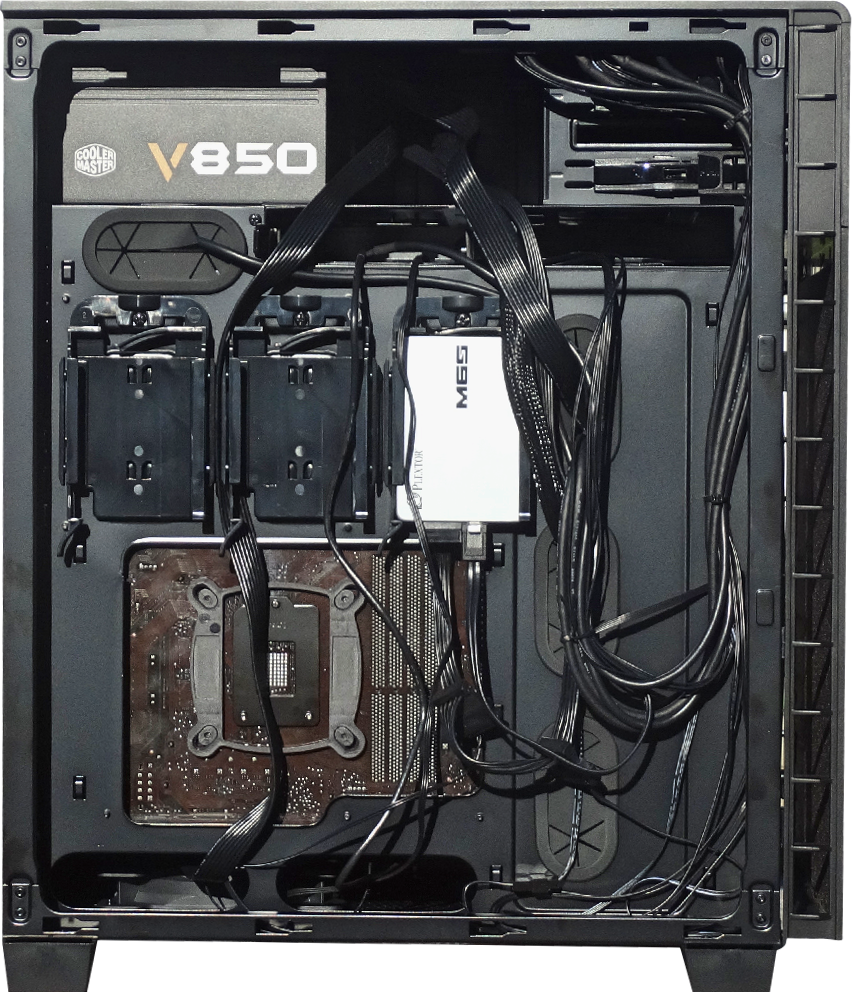 We tried many different variations but either it left us short on cable length, blocking 2.5″ bays and 3.5″ bays or just overall flustered.
We tried many different variations but either it left us short on cable length, blocking 2.5″ bays and 3.5″ bays or just overall flustered. 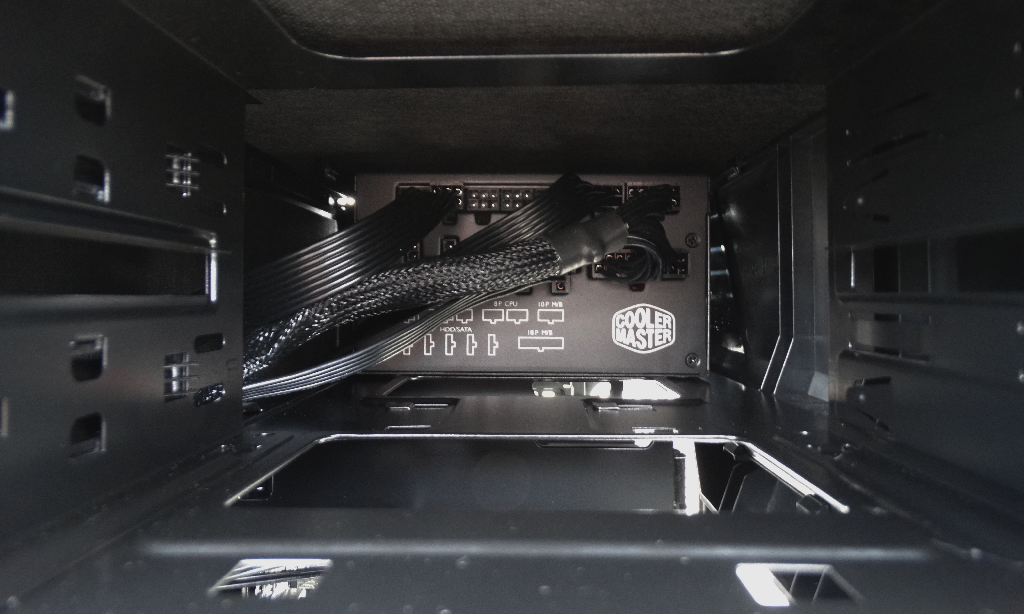 Below on the backside are the three 2.5″ drives and they are amazing. No tools, your drive simply clicks in and is secure. If you have OCD though yes you can still secure them in place with screws.
Below on the backside are the three 2.5″ drives and they are amazing. No tools, your drive simply clicks in and is secure. If you have OCD though yes you can still secure them in place with screws.
As we make our way down the rest of the build is pretty uniform with a regular case and there is not too much to say about it. The bottom of the case has support for up to three 120 fans or two 140’s. There is also enough clearance for low profile radiators to run your cooling units down on the floor.  Also, you can see there is plenty of room through pass-throughs at the bottom to route cables as well. We would have like to see these with rubber grommets to give a cleaner more opaque look but oh well.
Also, you can see there is plenty of room through pass-throughs at the bottom to route cables as well. We would have like to see these with rubber grommets to give a cleaner more opaque look but oh well.
SOUND
This is where the “Q” comes in. This case is silent. With the toggle switch on the I/O panel you can adjust from three settings which we couldn’t tell the difference between with the panels on. We had to take them off just to hear the subtle difference. If you are in the market for that silent case well the 600Q is bound to impress.
Review Overview
Packaging & Allure
Build
Features
Quiteness
Price
Inverted!
The inverted concept of the 600Q is fun and exciting but is better served in the 600C as hiding away the inversion behind panels takes away the point of inverting in the first place. We liked the build, it was not too hard and everything came together but there is room for improvement on this chassis.
 Technology X Tomorrow's Technology Today!
Technology X Tomorrow's Technology Today!

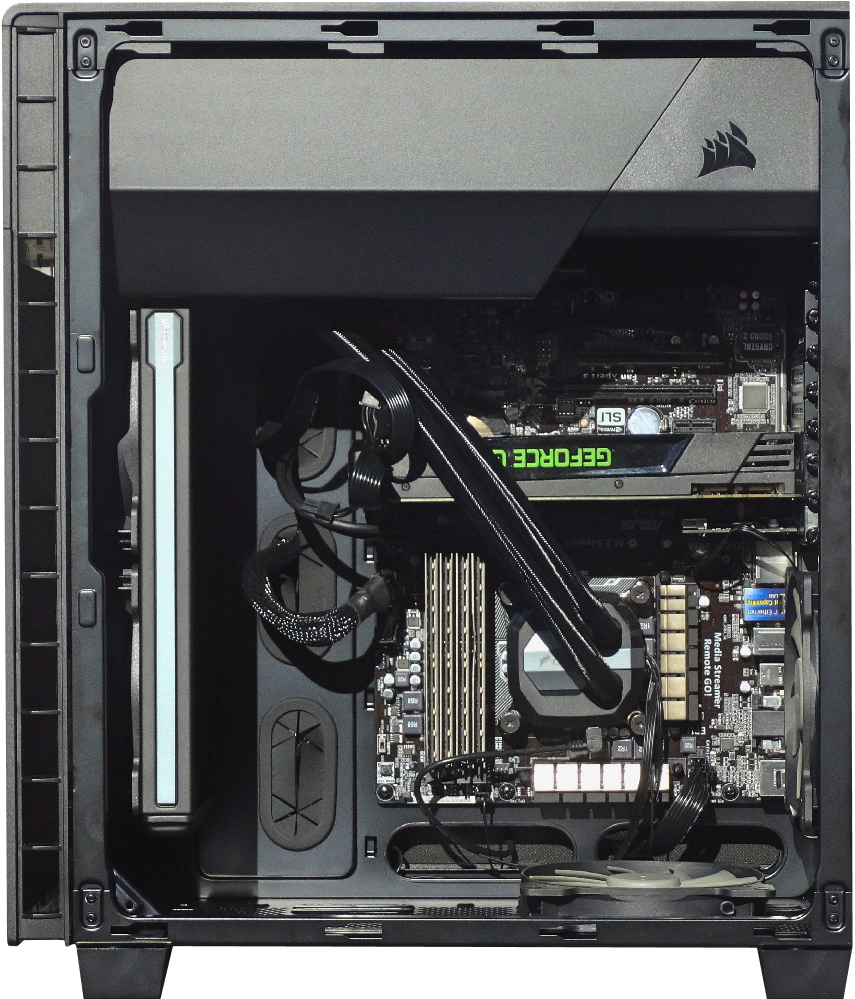
Wow guys I think you missed the point altogether here! The point of the inverted design is not to show off your build, it is for better air flow. If you had installed the cooler in the bottom of the case you might have then seen why the inverted build is such a good idea. You get fantastic flow through the case with no obstructions, that way you don’t have to worry about heat from the graphics card exhausting via the PSU as only a small percentage would do so. I think that in this review you have got hung up on the inverted design and have tried a conventional build in an unconventional case, go with the flow!